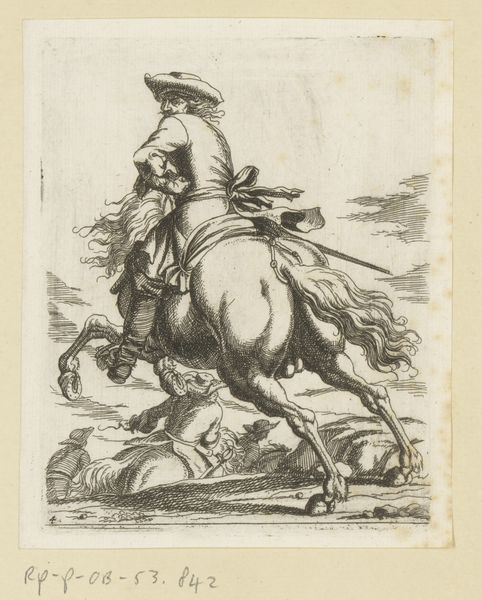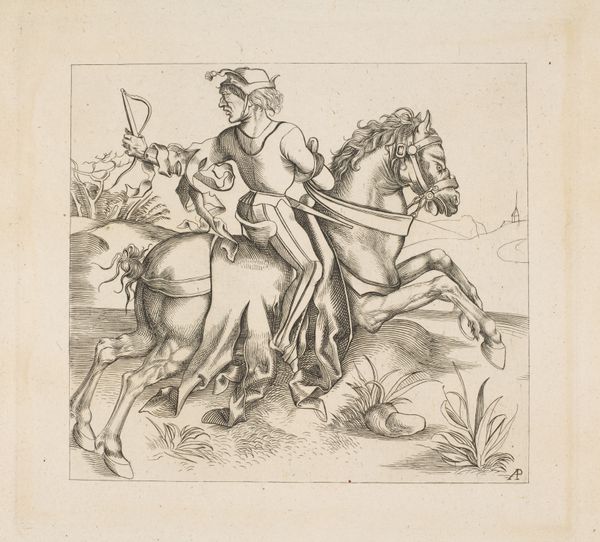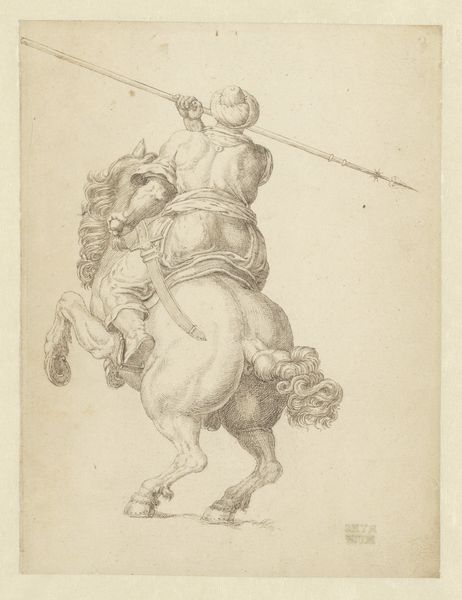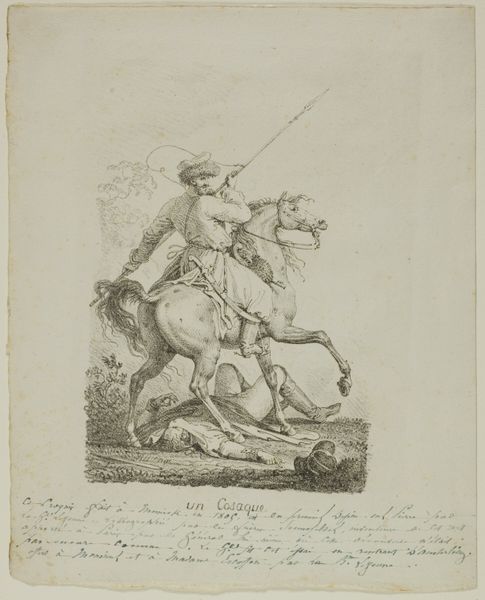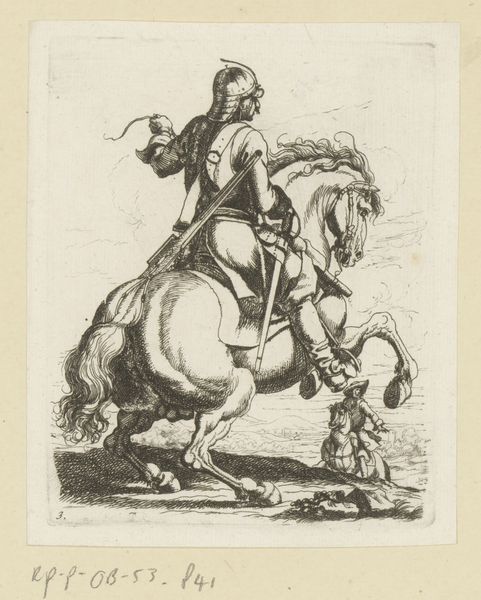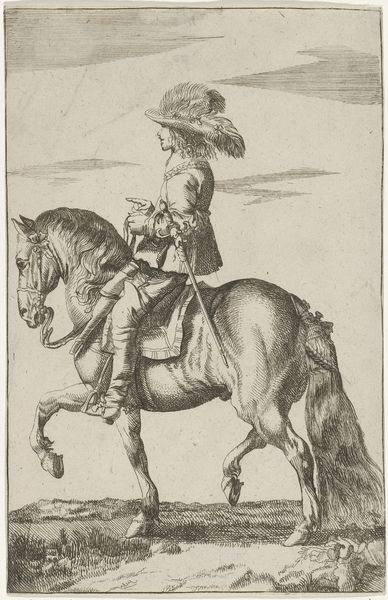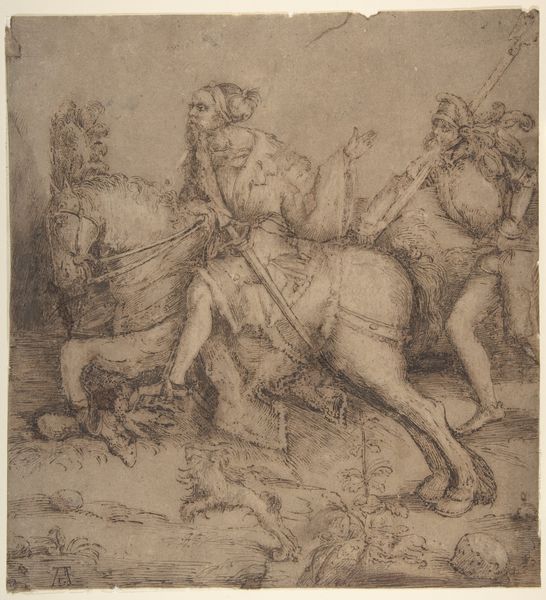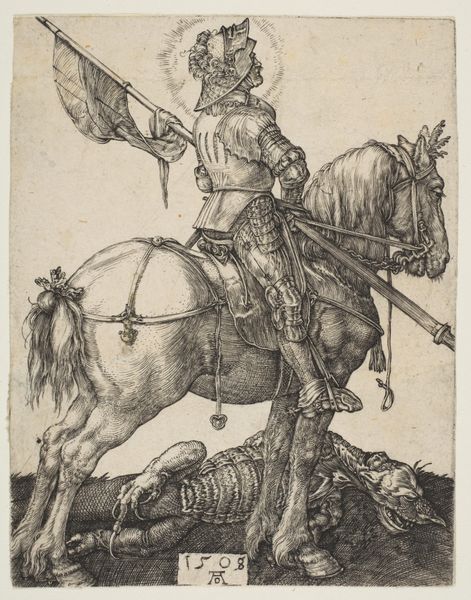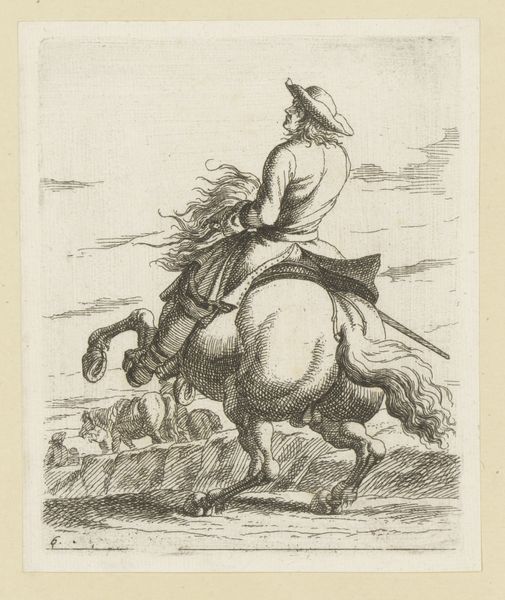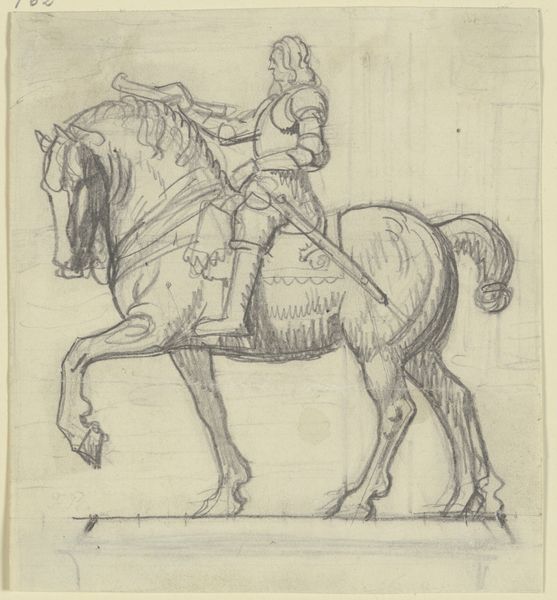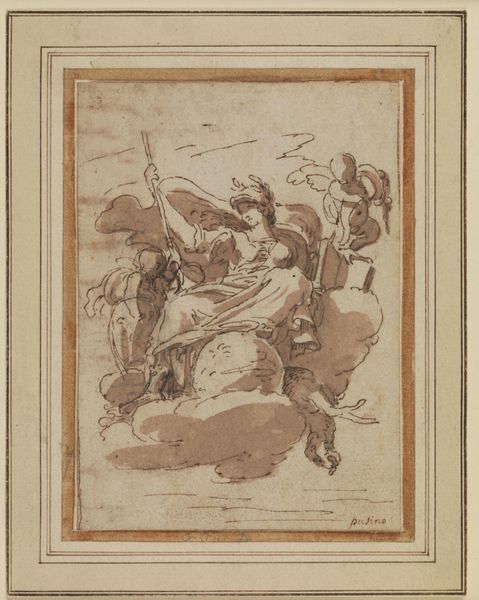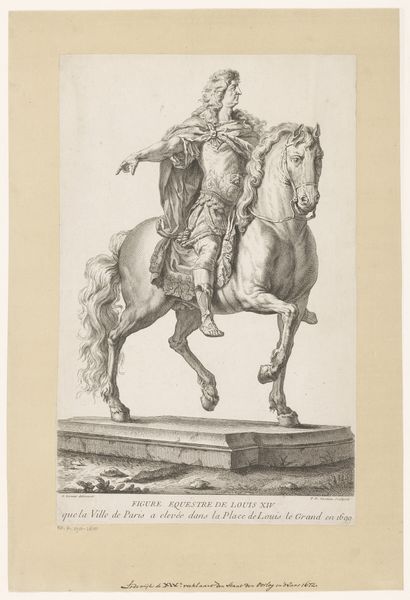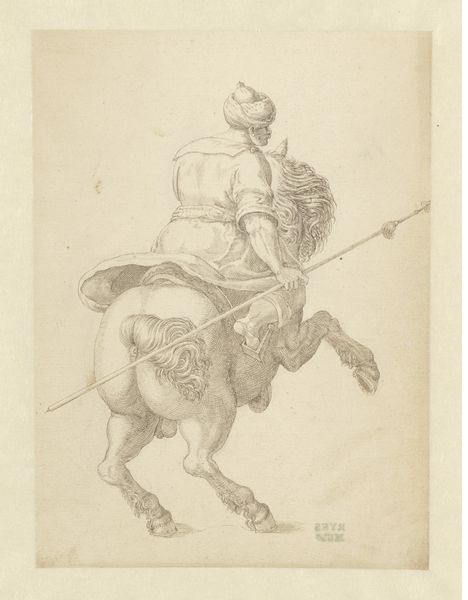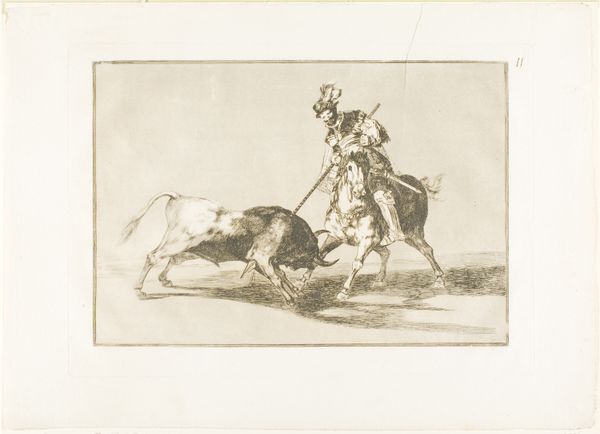
print, engraving
#
medieval
# print
#
etching
#
figuration
#
form
#
line
#
history-painting
#
northern-renaissance
#
engraving
Dimensions: 4 1/4 x 3 1/4 in. (10.8 x 8.26 cm) (plate)5 1/2 x 4 1/4 in. (13.97 x 10.8 cm) (sheet)
Copyright: Public Domain
Editor: Here we have Albrecht Dürer's "St. George on Horseback," made around 1505 using engraving techniques. The incredible detail achieved through line work is striking. What can you tell me about this piece? Curator: Notice how Dürer employs the relatively new technology of printmaking, an inexpensive means of mass production that revolutionized access to imagery and ideas. This challenges the traditionally valued materials of painting for dissemination. What statement is he making, aligning himself with artisans versus, say, courtly painters? Editor: That's fascinating. It does seem to democratize art, making it available beyond the elite. Was there something specific about engraving that Dürer found compelling? Curator: Look closely. Consider the sheer labor involved in the incising those fine lines into a metal plate. Each one represents a decision, a precise application of skill. The process itself becomes a testament to human ingenuity, don't you think? He is elevating a craft technique by showcasing its virtuosity, competing with other traditional "Art" media! Editor: Yes, I see that. And by focusing on St. George, a popular subject, wasn't Dürer catering to a specific market, too? A middle class who might purchase this print? Curator: Exactly! It is consumerism shaping artistic output. How does mass production affect our understanding of art's purpose and value? Editor: I never thought about art in those terms before, about printing methods as consumerism drivers. This reframes the image completely for me. Curator: Precisely, thinking about materiality, craft, labor and distribution models complicates narratives of art making!
Comments
No comments
Be the first to comment and join the conversation on the ultimate creative platform.
